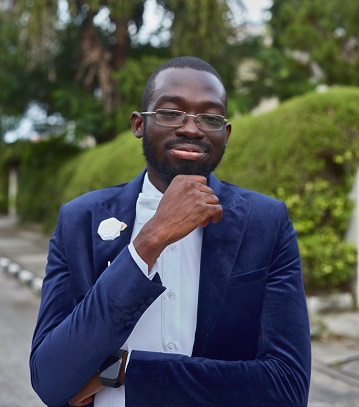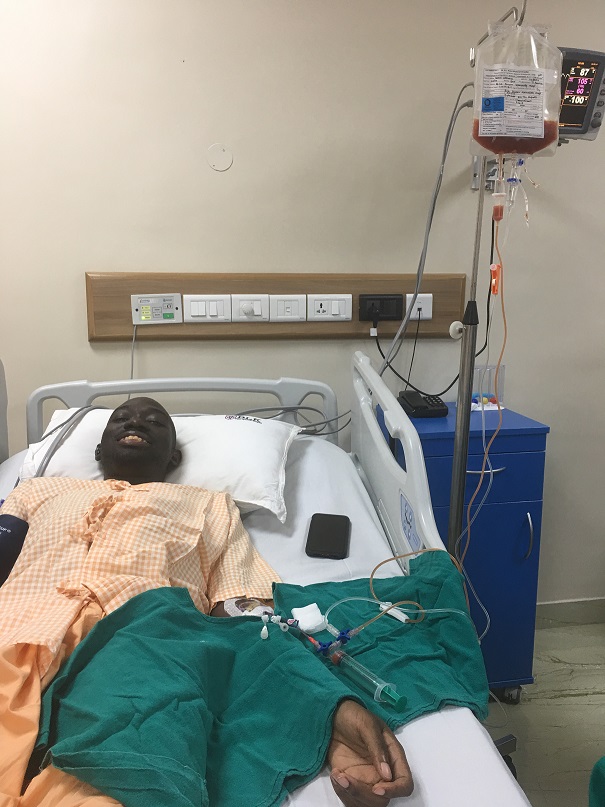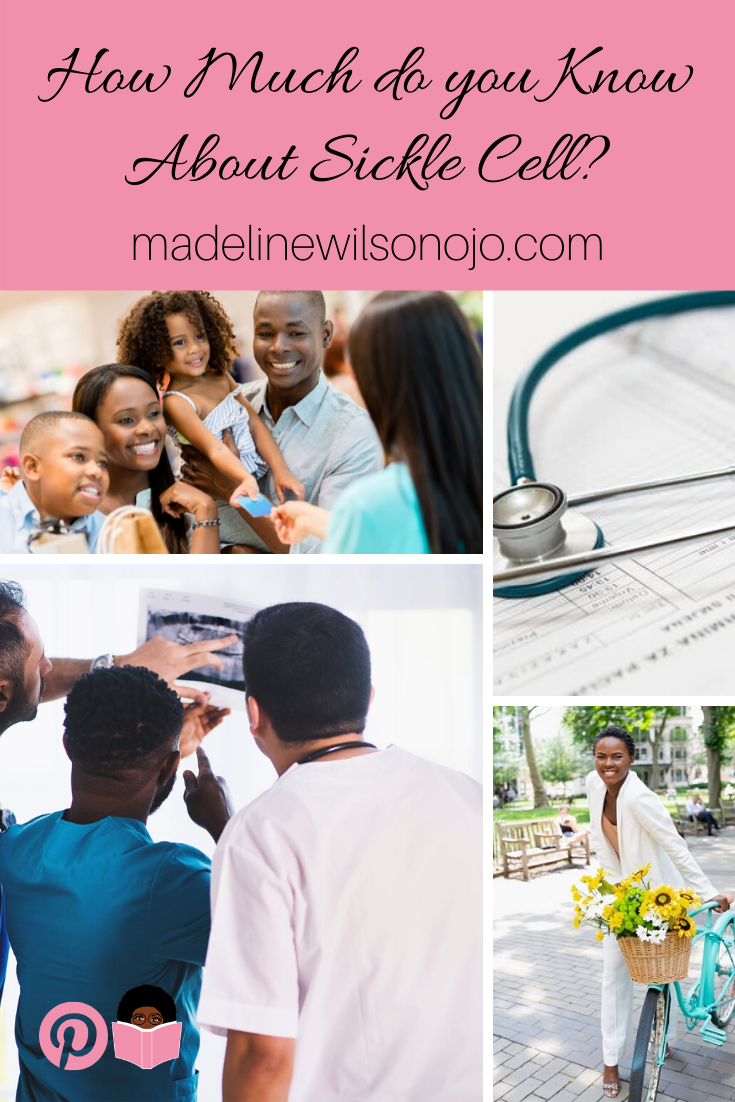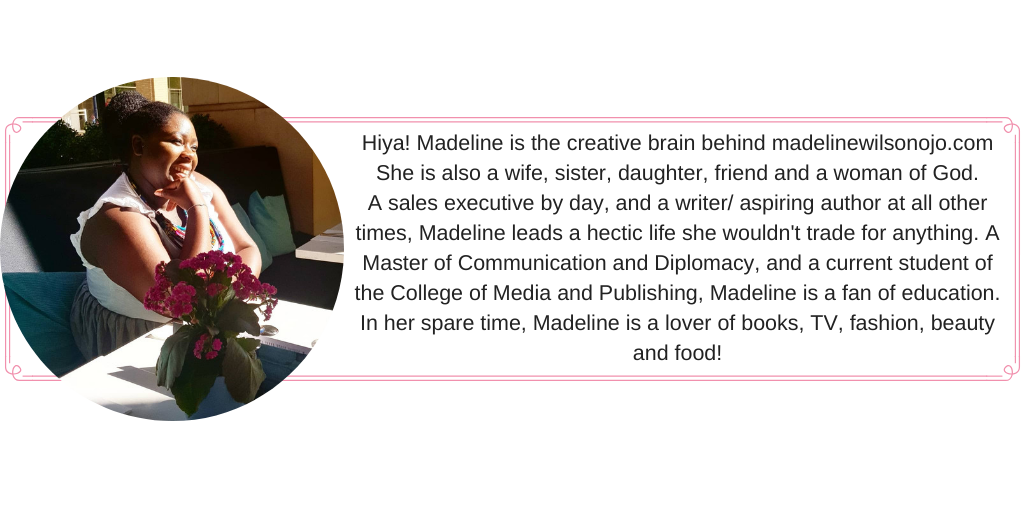
I’m very grateful for the stories I have been able to share so far in our Sickle Cell Awareness series. All along, I have asked myself, “is there a cure for sickle cell?” I guess today that question has been answered.
Different from our usual protocol, today we’re tuning in to the story of one of the fellas. You guys know that this is a platform where women’s voices are heard, but not too long ago, I read something on the Twitter timeline that stopped me dead in my tracks. In fact, what John tweeted, I didn’t even think was possible. So I had to reach out to him to find out more, and he graciously agreed to open up to us, so a big shout out to John.
Before we delve into his story, here’s a little intro: John originates from a town in Plateau State called Shendam in Nigeria, but is born and bred in Lagos, where he still currently resides. He’s a network administrator/ systems administrator, and 29 years old.
It took 29 years but I’m sickle cell free. Man that feels good to say. Talk about yokes to be free from. If you/your family have the means to get a stem cell transplant. Get one done. Risk be damned. Managing the pain is not it at all. It will eventually break you…
— John Niagwan (Niagy 2.0) (@Niagy) January 17, 2020
Sickle cell is a genetic blood disorder that affects the Haemoglobin (oxygen-carrying agent) in the red blood cells. It is always inherited from parents who have the trait/disease. Sickle cell disease is basically a mutation in the haemoglobin, normally its HbA but we get HbS. This causes the red blood cells to be sickle-shaped (hence the name) and not as elastic as a normal red blood cell. The irregularity of the shape and inelasticity can block the blood vessels which causes the most common symptom of the disease which is pain. It can vary from mild to extremely severe. There are other less common symptoms
From what age were you aware you had sickle cell?
I can’t remember when I was diagnosed but at around five years old I was aware enough to know something wasn’t right with me. I have a younger sister who was never sick compared to how often I was.
You may also want to read: Sickle Cell Awareness | Claudia’s Story
How did the condition affect your day to day life?
How did it not affect my life? For better or worse it’s kind of moulded almost everything. My personality, hobbies, interaction with people. I knew early on that having a very physical life was out of the question. I’m quite reserved, and can’t afford to get worked up over a lot of things. Triggers can be anything: emotional stress, work stress, anxiety, so I’ve learnt how to not let a lot of things bother me, to always try to keep my emotions in check, and to not stress about things that can’t be changed.
My hobbies are things like reading, watching films/tv shows, gaming – just things that don’t cause me to exert myself physically. I’ve usually kept most people at arm’s length. Besides family and a few friends who managed to crack through my very high and thick walls. My thought process was that if the disease did get me not so many people would be affected by the loss. I’m very pragmatic that way. I’ve still managed to get things done in life, not as well as I would have liked, but that’s life for most people. I think the disease helped me not take things too seriously; building a sense of humour about things has come in handy over the years with just coping.

When did you first look into getting treated?
The first time I came across stem cell transplant was in 2013. Almost no one was doing it on older patients then so I didn’t look too much into it. It was restricted mostly to children at that point. But science keeps progressing and now older patients can go through it with about a chance of 70% success rate. Looking back into it in 2018, my painful episodes were becoming more frequent so my family and I decided to give it a shot
What is a stem cell transplant?
A stem cell transplant is basically the process of replacing a person’s cell producing system, the red bone marrow with healthy ones. It’s used to treat a lot of blood cancers and some non-cancerous blood disorders
How easy was it for you to make the decision to go for it, and did you have any fears?
There were obviously the financial costs of such a procedure but things fell into place at the right time. The decision to go for it was difficult. There was a lot of going back and forth in my head. What if it wasn’t successful? I grappled with the risk of death and complications, and just fear of the unknown.
I knew sickle cell and what to expect from the disease as it had been a part of my life for so long but this was a new thing entirely – uncharted territory! But after thinking about it, I concluded that sickle cell would most likely kill me eventually, slow and definitely painfully. This procedure would either cure me or kill my condition. I was at the point where I was ready to do anything to get rid of the pain. I was running on fumes endurance wise. So, the choice just became an easy one at that point. Where most people view death with fear, I saw it as freedom from pain. So, either outcome was acceptable to me. It sounds dark but that’s where I was at.

What processes did you have to go through to book the treatment?
There’s a sickle cell foundation in Nigeria which I went to regularly for check-ups. I have a friend there more like a brother now, Mr. Yemi Onijala who worked closely with many transplant patients over the years. He was up to date on the process and knew how successful the procedure had become for older patients. He was actually the one that brought up the possibility of the procedure again. I guess he could see my suffering.
First, I had to do a test called HLA typing with my sister and mother to find who best matched me to serve as a donor. After confirming my mum was a sufficient match, he sent my details to the hospital in India, and they sent over details about the procedure and cost estimates. He arranged a call with a doctor over there who answered any questions I had. I didn’t have to change my diet or anything. I just had to continue my drugs (Folic acid, proguanil and hydroxyurea) as usual until I got to India. Getting the India medical visa was kind of a hassle but it worked out so can’t really complain. I obtained supporting documents from the hospital, after which I sent an email directly to the Indian High Commission from the hospital, along with three months worth of bank statements and other assets, and biometrics. Then there were two stages of interviews.
Post transplant day 125: pic.twitter.com/YGQlW7rX76
— John Niagwan (Niagy 2.0) (@Niagy) February 11, 2020
I got to India in the middle of September. The hospital provided transport and support from the airport to our accommodation that we had selected beforehand. Landed on a Saturday so had some time to rest. On Monday morning we went to the hospital to get the process started. I got a session with the doctor. They carried out their own HLA test again, a more high-resolution version. I did some preop tests: a kidney and liver function test, an HIV and hepatitis screening, cardiac tests (ECG and Echocardiogram), and a pulmonary function test. They were just making sure I was healthy enough to go through with the procedure. When everything checked out, I was admitted and had to go through high dose chemotherapy to get rid of my bone marrow and make room for the new one as well as just some other drugs to suppress my immune system and reduce the risk of rejection.
Tell me about the day you got the stem cell transplant
It happened on the 9th of October 2019. I wasn’t sure if it would happen that day; it depended on if they had enough stem cells from my mum the day before but they did. There were two doctors and two nurses to assist. When people hear transplant, they think invasive surgery but this was anything but. I had a cannula put in the day I was admitted and that’s how I received all medication including the stem cells, It’s basically like a blood transfusion but without blood. It took about 45 minutes to empty the IV bag into me. I was more excited than anything else, I felt this was the start of a new life. By that time, my thoughts were purely positive. After it was all done my mum was like, “Is that all?” That made me laugh.
How long did recovery take?
Technically I’m still in recovery but after 100 days with no issues, the procedure is deemed a success. They can tell from two weeks after transplant if engraftment has occurred that’s the first milestone. That’s when the new cells have settled in the bones and started producing blood and cells. From there it’s just about keeping an eye on my red blood cells, white blood cells and platelet levels. They also have to watch out for ‘Graft vs host Disease’ (GVHD). That’s what it’s called if rejection starts to occur.
I was lucky to not have any severe discomfort. Everything was within an acceptable range. I had some fevers, a little pain here and there but after 30 days I was free to go home. Since being discharged I’ve had weekly/biweekly check-ups to make sure things are going well. I’ve been fine and on day 100 post-transplant I was officially deemed sickle cell free! Greatest news ever! If you’ve been asking, “is there a cure for sickle cell?”, yes there is!
Going forward I’ll continue on some medication because my immune system is still rebuilding. I’ll be on antibiotics and antivirals for the for a while until the doctors say I can come of it. Only thing I have to worry about now is catching infections. I’ll have to get all my vaccines again eventually when the doctors say it’s okay to do so.
“Your condition is a part of you but it’s not all of you”
What changes can you already see in your life, post-treatment?
Well, this is the longest in recent memory that I haven’t had a crisis. I don’t get tired as easily as I used to before. Gradually building up my stamina with light exercise. I’m putting on weight as I’ve never weighed as much as I do right now. It’s been a nice change.
What plans do you have for yourself in the future?
A new friend I got in touch with during the process who had the same procedure done about three years ago recommended I start going to the gym to put my new body through its paces, and to build up my body. I’ll finally be able to do that. I started my masters when I first finished my first degree in 2012 but had to drop out cause my crisis got so bad that I just couldn’t keep up with the course. I definitely want to get that done as soon as possible. I have a lot of catching up to do career-wise. I intend to get started on all that as soon as possible. Possibilities are endless now. I have time I didn’t think I would get so I’m going to make the most of it. I would also like to help as many warriors as I can eventually. I’m going to take time to enjoy my pain-free life for a bit first 🙂
What would you like everyone to know about sickle cell?
I think most people feel shame for having a condition. I know I certainly did. I want them to know it’s not their fault. We tend to be ashamed of our afflictions but that’s not helpful. Talk to people about it and people will share theirs with you. Derive strength from each other. Support is very important. Your condition is a part of you but it’s not all of you. It took me a while to learn that lesson. Don’t dwell on it. That never helps. Don’t fall into the trap of self-pity. When the pain comes, deal with it, get over it and soldier on. Just keep moving forward. We are called warriors for a reason. Don’t give up and hang in there!
Whew! What an inspiring an account. So for those asking, “is there a cure for sickle cell?“, there most certainly is! I’d like to send a special thanks again to everyone who has participated in, read and shared our Sickle Cell Awareness series.
You may also want to read:
Sickle Cell Awareness | Betty’s Story

